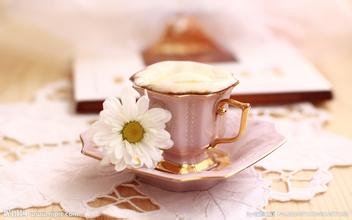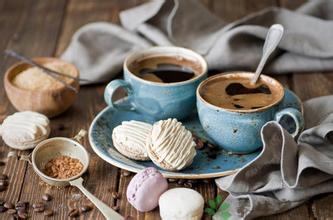Introduction to the description of taste characteristics and flavor of Italian roasted coffee
Introduction of Italian coffee beans
Blue Mountain Coffee:
The origin of Jamaica gets its name from the Blue Mountains surrounded by the Caribbean Sea.
Sour, sweet, bitter taste are very harmonious and have excellent flavor and aroma, suitable for individual coffee, suitable for moderate roasting.
Java Coffee:
Origin: Sumatra, Indonesia. It belongs to Arabica.
After baking, the bitter taste is extremely strong and the aroma is very light, without sour taste.
Conna Coffee:
Origin: Connor area, Hawaii.
The coffee beans cultivated by volcanic lava have a slightly wine aroma and a very unique flavor.
Santos Coffee:
Mainly produces Brazil, Sao Paulo, Brazil.
Sweet, sour and bitter are neutral, moderately sour, special and elegant.
Mocha Coffee:
Origin: Ethiopia.
It has a unique aroma, moderate baking has a soft sour taste, while deep baking gives off a strong aroma, which is occasionally used as a mixed drink.
Brazilian coffee:
Origin: Brazil.
Sour and bitter taste can be mixed by baking, moderate roasting soft flavor, moderate taste, deep baking has a strong bitter taste, suitable for blending coffee.

Cappuccino traditional cappuccino coffee is 1/3 espresso, 1/3 steamed milk and 1/3 foam milk. Cappuccinos are divided into dry and wet ones. Dry cappuccino (Dry Cappuccino) refers to the conditioning method with more milk bubbles and less milk, and the coffee tastes stronger than milk flavor. Wet cappuccino (Wet Cappuccino) refers to the practice of fewer milk bubbles and more milk, with the smell of milk overshadowed by the thick smell of coffee, which is suitable for those with light taste.
Caff è Mocha is one of the oldest coffee, named after the famous port of Mocha. Mocha is a mixture of Italian espresso, chocolate syrup, whipped cream and milk. It is a variant of Italian latte.
Caramel macchiato (Caramel Macchiato), which is made by adding espresso, vanilla and pure caramel to hot milk, is characterized by three different flavors in a cup of drink.
Irish coffee (Irish Coffee) is a coffee that resembles both wine and coffee. It is made by mixing hot coffee, Irish Whiskey, cream and sugar.
Viennese Coffee, Austria's most famous coffee, sprinkles a thin layer of sugar or rock sugar on the bottom of a warm coffee cup, then pours hot and thick black coffee into the cup, and finally decorates the coffee surface with two tablespoons of cold fresh cream. A cup of Viennese coffee is ready.
Important Notice :
前街咖啡 FrontStreet Coffee has moved to new addredd:
FrontStreet Coffee Address: 315,Donghua East Road,GuangZhou
Tel:020 38364473
- Prev

Introduction to the producing area of the characteristic treatment method of El Salvador Coffee washing Manor
The government finally realized the great role of coffee in the national economy, such as solving employment, earning foreign exchange and developing agricultural production, etc. Therefore, in 1990, part of the coffee export industry was privatized, hoping to increase the income rate of coffee in the export market. Today, this kind of coffee accounts for 40% of the country's exports.
- Next

Flavor description of Yunnan Tieka Coffee Bean introduction to the characteristics of varieties produced in the manor area
The so-called new variety of Yunnan Tieka coffee beans actually refers to catimor (Katimo), which is a hybrid of timor and Arabica from the Roberta family. Compared with the old varieties, it lacks rich aroma and taste, and has a relatively shallow smell of grass and soil, but it has the advantages of resistance to diseases and insect pests, easy to manage, high yield and the highest yield per mu can reach 350kg.
Related
- Beginners will see the "Coffee pull flower" guide!
- What is the difference between ice blog purified milk and ordinary milk coffee?
- Why is the Philippines the largest producer of crops in Liberia?
- For coffee extraction, should the fine powder be retained?
- How does extracted espresso fill pressed powder? How much strength does it take to press the powder?
- How to make jasmine cold extract coffee? Is the jasmine + latte good?
- Will this little toy really make the coffee taste better? How does Lily Drip affect coffee extraction?
- Will the action of slapping the filter cup also affect coffee extraction?
- What's the difference between powder-to-water ratio and powder-to-liquid ratio?
- What is the Ethiopian local species? What does it have to do with Heirloom native species?

